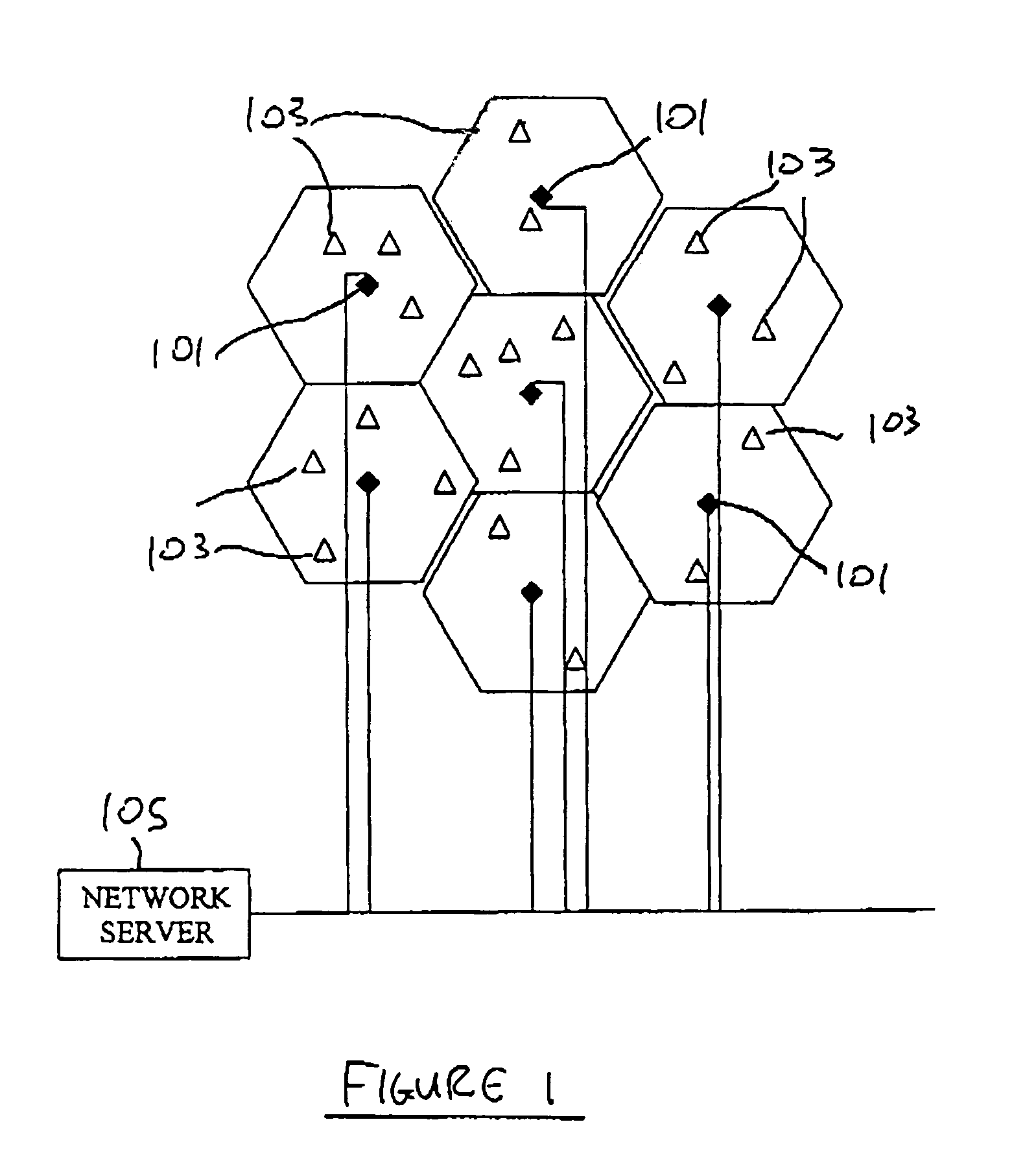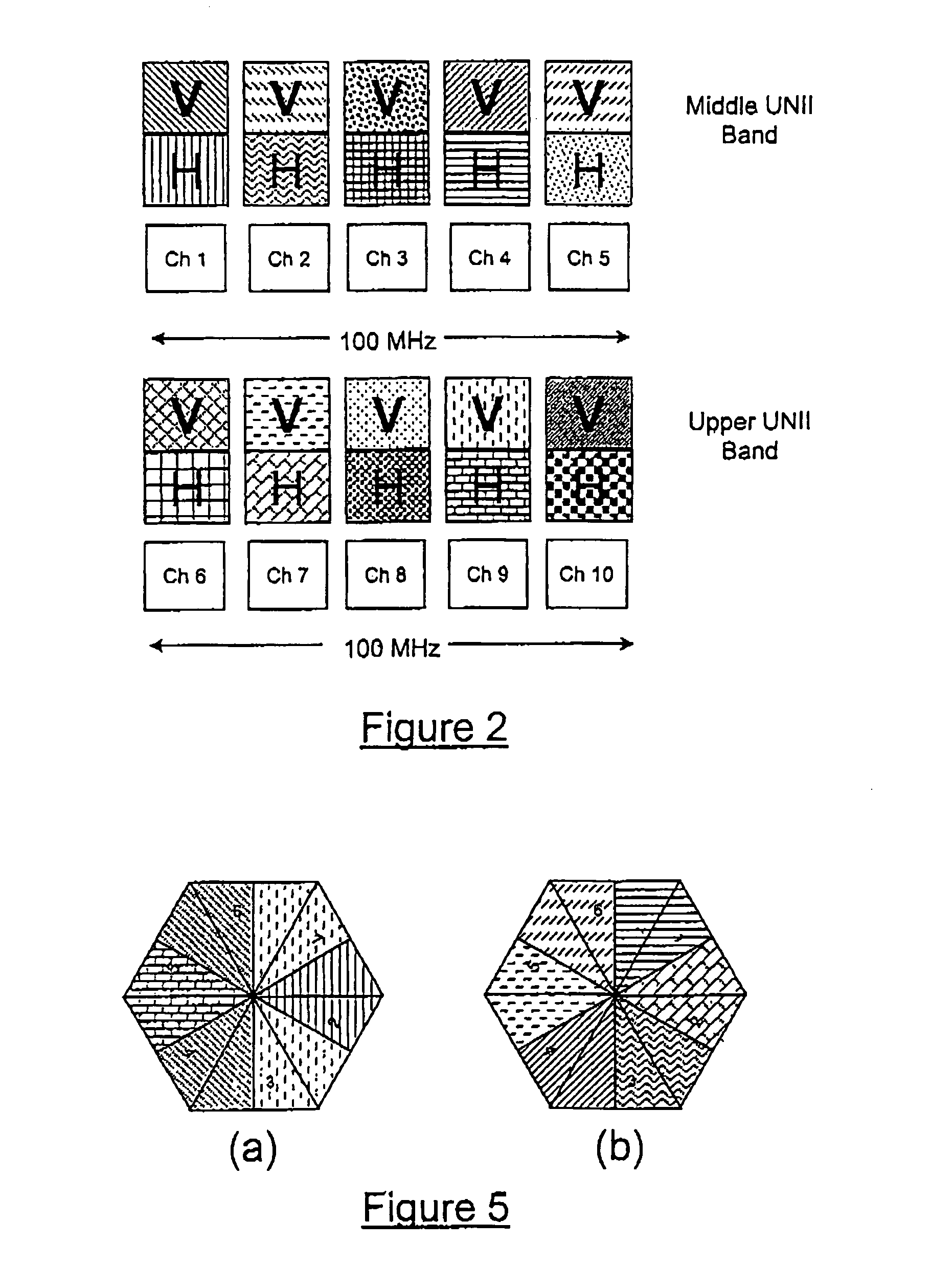Control signalling and dynamic channel allocation in a wireless network
a wireless network and control signal technology, applied in the field of control signalling and dynamic channel allocation in a wireless network, can solve the problems of prone to radio interference in the wireless channel over which the data is transmitted, and achieve the effects of improving channel efficiency, high efficiency of spectrum re-use, and more computational tractability
- Summary
- Abstract
- Description
- Claims
- Application Information
AI Technical Summary
Benefits of technology
Problems solved by technology
Method used
Image
Examples
Embodiment Construction
[0048]Preferred embodiments of the two aspects of the present invention will now be described. It is to be understood that the following descriptions are to be considered as non-limiting examples, and that the methods and systems of both aspects of the present invention may find application in any wireless data communications network. The common background to the two aspects will be described first with respect to FIG. 1.
Common Background
[0049]As shown in FIG. 1, the coverage area of the network of the present invention is divided into cells, each cell having a central fixed base station (101) referred to herein as an access point, and one or more remote subscriber terminals (103). Since the actual coverage pattern of each cell is circular, the deployment of cells provides some overlap among adjacent cells. Each access point 101 is provided with a number of separate transceivers each arranged to cover a fixed sector, an ATM switch, and an access point control server. The access poin...
PUM
 Login to View More
Login to View More Abstract
Description
Claims
Application Information
 Login to View More
Login to View More - R&D
- Intellectual Property
- Life Sciences
- Materials
- Tech Scout
- Unparalleled Data Quality
- Higher Quality Content
- 60% Fewer Hallucinations
Browse by: Latest US Patents, China's latest patents, Technical Efficacy Thesaurus, Application Domain, Technology Topic, Popular Technical Reports.
© 2025 PatSnap. All rights reserved.Legal|Privacy policy|Modern Slavery Act Transparency Statement|Sitemap|About US| Contact US: help@patsnap.com



